~ Guest Blogger Denise Lawungkurr Goodfellow ~
Darwin Mangroves:
Great variety of specialist mangrove birds just a few kilometres from Darwin CBD. A top spot for one of my favourites, Chestnut Rail Eulabeornis castaneoventris, is on the city-side of the suburb of Bayview Haven.

Other lovely birds are Mangrove Robin Peneoenanthe pulverulenta and Red-headed Honeyeater Myzomela erythrocephala.

The drawbacks are deep mud (a police officer and I got stuck once, thigh-deep), clambering over the looping roots of Stilt-rooted Mangrove Rhizophora stylosa, and the occasional large saltwater crocodile. Worst of all are the biting midges. Go when the shadows are long and the tide is out, wear camouflage clothes and keep quiet and still. If that’s sounds too difficult try Charles Darwin Park just a little further up the road or the bridge over the Elizabeth River, just out of Palmerston, the town south of Darwin.
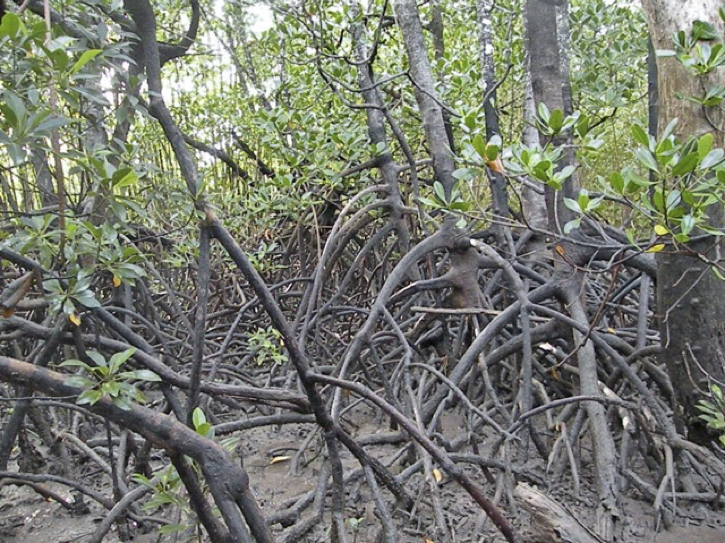
Stilt-rooted Mangrove
Darwin River:
Of course, this has to be one of my favourite spots – but then I live here! 85 kms south of Darwin, NT Darwin River is a top spot for Partridge Pigeon Geohaps smithii smithii, a bird that’s quietly going extinct elsewhere in the Top End.
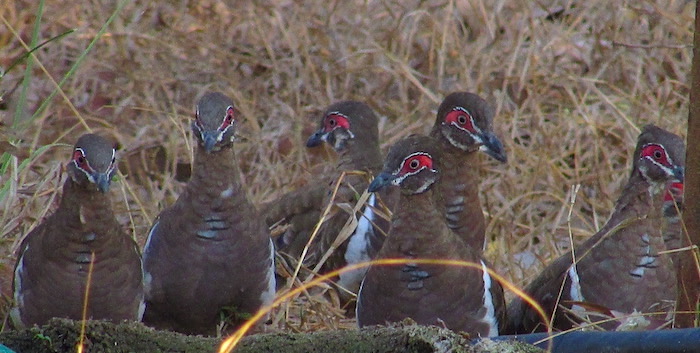
Partridge Pigeons
And our place appears to be PP central- the bird breeds here. Look for a warm brown bird with a white wing spur and red face, and a startled expression. Sadly, gamba grass, a four-metre-high weed is taking over the area (our 20 acres are an island of biological diversity in a sea of the stuff). But look for roads that have weed-free savanna woodland on both sides of the road. Visit Berry Springs Nature Park on the way for monsoon forest birds and Darwin River Supermarket for an ice-cream.
If coming in August/September watch out for wildfire. Gamba grass fires are dangerous, and the only reason that habitat for Partridge Pigeons still exist here is because of those few landholders (like us) who exhaust themselves clearing the stuff and our wonderful Darwin River Volunteer Bushfire Brigade.

What was once woodland bis now almost completely Gamba Grass
Fogg Dam:
85 km east of Darwin Fogg Dam is known worldwide for its birds and the huge population of water pythons (my children’s dreaming animal). Fogg Dam is an artificial dam built for a rice project in the 1960’s. It failed, but left a wonderful lake juxtaposed with monsoon and paperbark forest, and floodplains.

Monsoon forest birds include Rainbow Pitta Pitta iris and Rose-crowned Fruit-Dove Ptilinopus regina. Go early in the morning and look for crakes emerging from the spike-rush to feed.
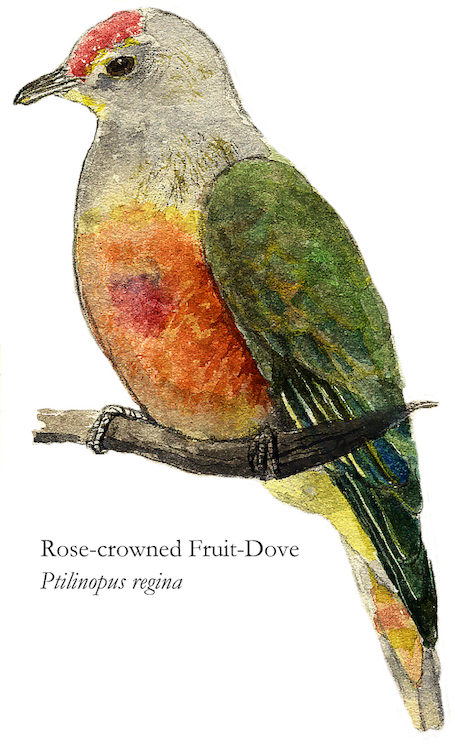
My favourite bird sighting occurred one evening, of Green Pygmy-geese roosting on the leaves of water lillies Nymphea violacea.
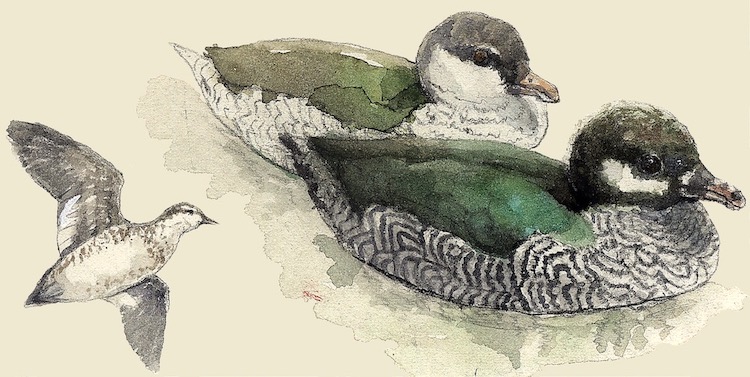
boate
Don’t walk along the causeway. Saltwater crocodiles live in Fogg Dam and I know of at least one attack.
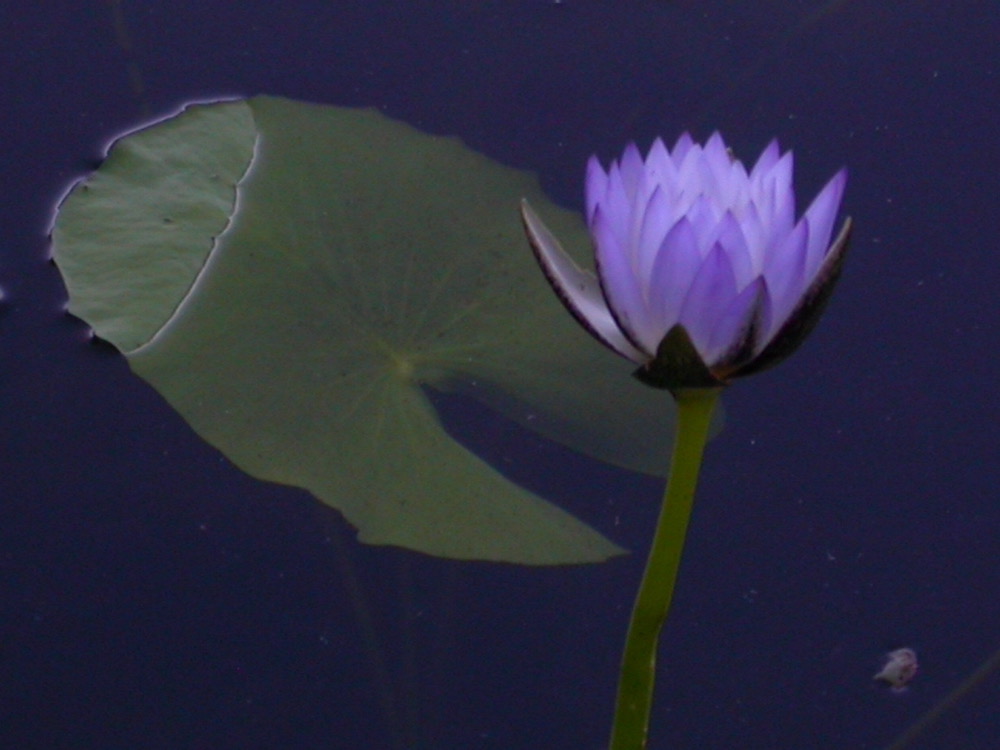
Kudjekbinj (Baby Dreaming), Western Arnhem Land:
Everything beautiful about the Top End is to be found at this small outstation, now deserted. I used to take birdwatchers to camp among the sandstone.

scenery, gudjekbinj
It is just metres from the cave in which the most senior traditional owners, my sisters, lived as children and ancient paintings on rock of Warramurrunggundji, the creation mother and Yawk Yawk, “fish with a human face”, or mermaid dreaming (my dreaming).
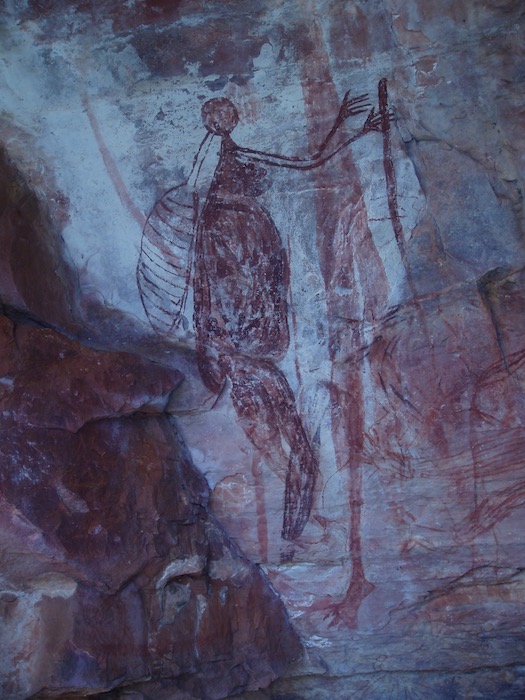
OLYMPUS DIGITAL CAMERA
Endemics now rather hard to find in Kakadu National Park are here. Chestnut-quilled Rock-pigeons waddled around the white sand of the campsite and Banded Fruit-doves flew into feed on the black fruit of Pouteria sericea, a little tree growing in a crevice in the sandstone just behind our tents.

And now White-throated Grasswren has been spotted there. It used to be easy to see in Kakadu, but not anymore.
As for dangers, a large (up to four metres in length) python, Nyctophilopython oenpelliensis endemic to the Arnhem Land escarpment is known to frequent the area (it posed a danger to my sisters as children). However, there may be an even larger snake, ‘as long as the distance between two telegraph poles (sister-in-law). Its name is Ngalinawa, rock snake, big one.
in 2004, I took a tour operator friend to Kudjekbinj, and we camped near the cave where my Yaboks (older sisters) used to live as children. One day my friend decided to do some exploring, following a path I had previously taken, but was back within the hour, ashen-faced and shaking. He had entered a cave, only to discover a snake track as “wide as a tractor tyre”, and terrified he took to his heels. Whether it was just a very large Nawaran (Oenpelli Python), or Ngalinawa I don’t know (incidentally, my daughter was named Ngalinawa, to protect her from unscrupulous men).
Another site on Kudjekbinj is dangerous because if the termite mounds there are damaged then the perpetrator becomes pregnant, forever with two or more babies. And that applies to men as well as women.
Relatives one day hope to be able to have birdwatchers visit Kudjekbinj again.
Warramurrunggundji,
